
TDTC hosted a Crypto Mining Panel in Dallas, Texas.
2023-06-12
On June 11, 2023, TDTC was invited to host a Crypto mining Panel for the Tsinghua and Peking University alumni associations in Dallas, Texas. The event was presided over by TDTC's CEO, Zhang Lu, and featured Professor Fang Wei and TDTC partners Xie Le, Chen Ming, Wen Jin, Zhang Liang, among others, as panel speakers. This panel got to be one of the most attended among the joint activities of Tsinghua and Peking University alumni associations, attracting over fifty alumni offline and online. The event lasted for more than three hours, with lively discussions.
Established in November 2020, TDTC was jointly founded by industry veterans in fields such as digital economy, electric power, traditional finance, and equity investment. The company is committed to global deployment in blockchain infrastructure, digital asset management, and the innovation of the crypto industry . The founding members of the company have managed one of Asian largest mining projects, possessing operational experience across multiple industry cycles. Currently, the company is heavily investing in the construction and operation of crypto mining facilities in Texas, USA.
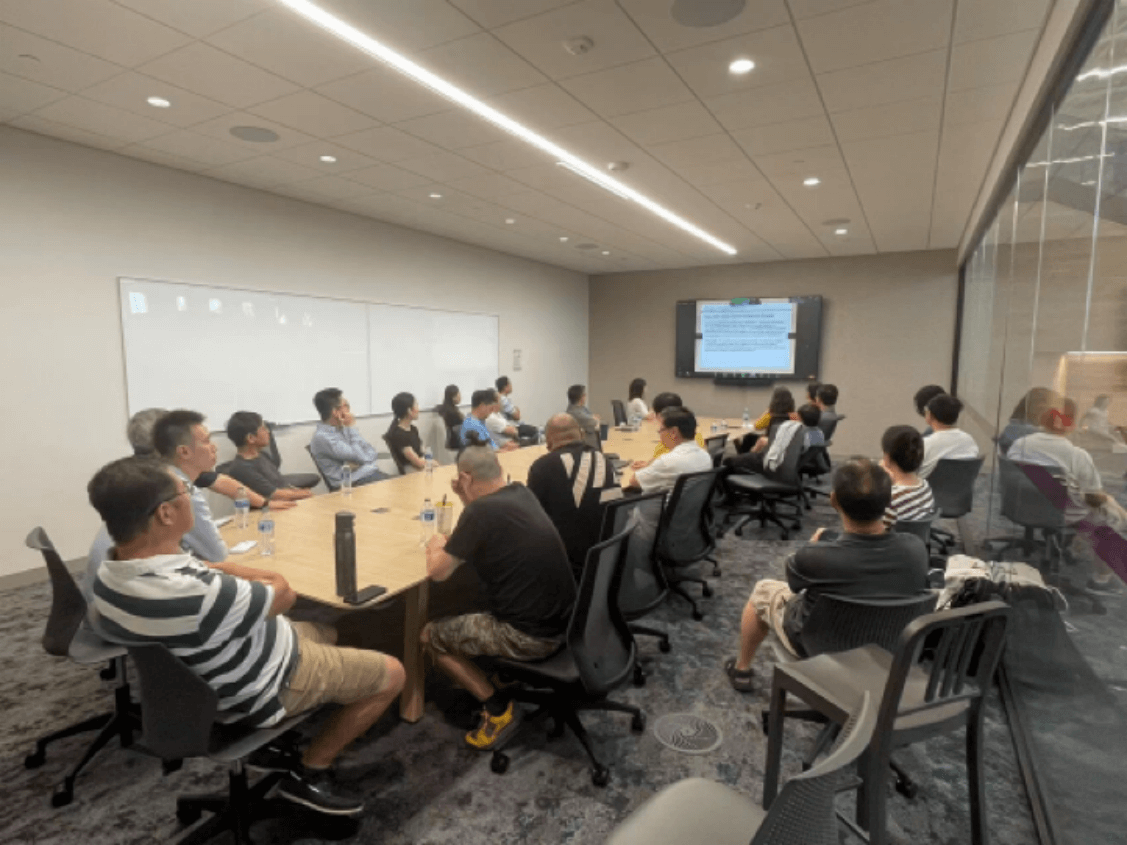
Professor Fang Wei graduated as the top student from the Accounting Department of Tsinghua University in 1998. She holds master s and doctoral degrees from Indiana University. Currently serving as a chaired professor of finance at the Kelley School of Business, Indiana University, Dr. Fang previously held a professorship in accounting at the University of Minnesota and worked as a tax expert at Deloitte. Her long-term research focuses on corporate finance and financial accounting, with special interests in areas such as cryptocurrency, corporate fraud, and retail transactions. Dr. Fang has presented her research at over 100 academic institutions and conferences and published articles in media outlets such as Bloomberg, CNBC, The Economist, Financial Times, Forbes, Harvard Business Review, NPR, The Washington Post, and The Wall Street Journal. In 2020, the Financial Times recognized one of her papers as among the 100 most socially impactful studies conducted by business schools. Since 2018, Dr. Fang has been teaching cryptocurrency and blockchain, establishing herself as an outstanding expert in cryptocurrency reporting and taxation.
During her presentation, Professor Fang introduced the fundamental concepts and technological principles of cryptocurrencies and blockchain. She defined cryptocurrencies as digital, decentralized currencies relying on cryptography for security. Digitalization means that cryptocurrencies are virtual and lack of physical form, while decentralization implies extreme dispersion. Cryptography can be understood simply as encryption technology. The invention of Bitcoin by Satoshi Nakamoto in 2008 marked a significant milestone in the history of cryptocurrencies. Dr. Fang emphasized the difficulty in creating cryptocurrencies, discussing the challenges related to digitalization, such as solving the double-spending problem, and addressing decentralization issues, such as achieving consensus and finding trusted nodes to update transaction records. Bitcoin addresses these challenges through cryptography, blockchain, and consensus mechanisms. Professor Fang highlighted that only a deep understanding of the technical principles behind Bitcoin can make one a successful long-term investor.
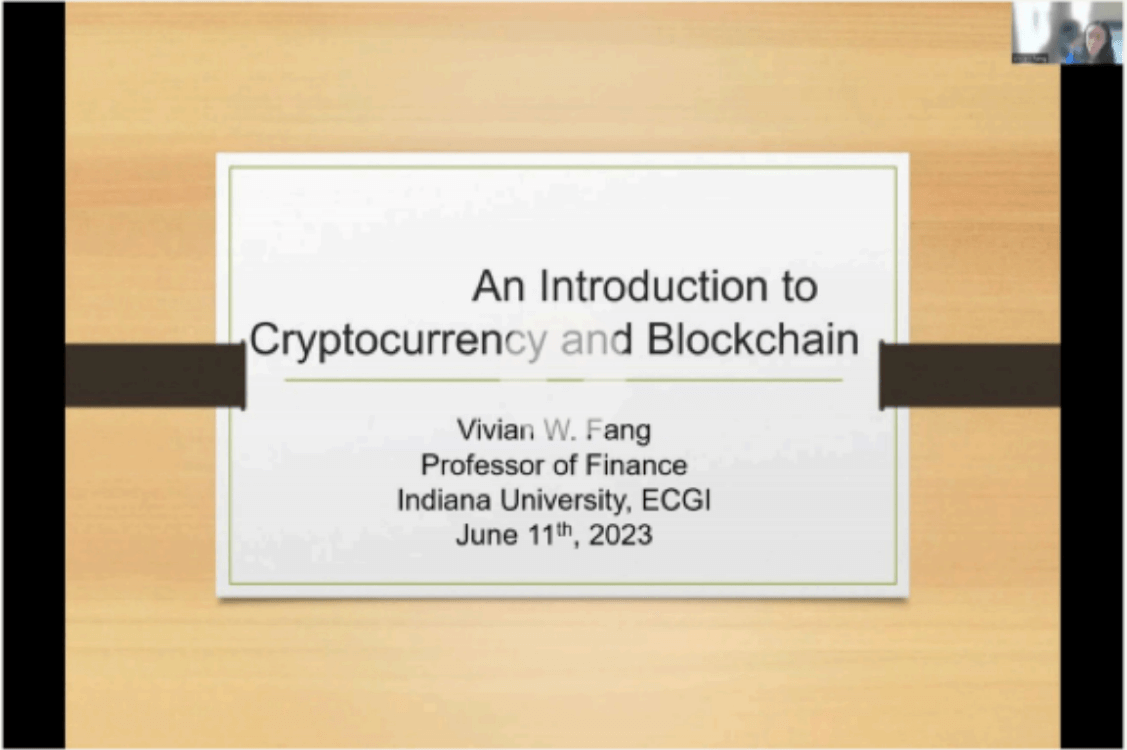
Professor Xie Le obtained his bachelor s degree in Electrical Engineering from Tsinghua University in 2004, followed by a master s degree in Engineering Sciences from Harvard University in 2005, and a Ph.D. in Electrical and Computer Engineering from Carnegie Mellon University in 2009. Currently serving as an IEEE Fellow and a professor in the Department of Electrical and Computer Engineering at Texas A&M University, Professor Xie s research interests include modeling and control of power systems, integration of renewable and variable energy resources, design and optimization of competitive power systems, and the theory and application of cyber-physical energy systems.
Professor Xie mentioned that from 2019 to 2023, the U.S. hash rate share increased from 9% to 38%, and energy consumption grew from 450MW to 3,200MW. The total hash rate of the entire network increased 140 times from 2016 to 2022. Energy consumption in the U.S. due to mining increased 20 times from 2016 to 2022. The situation of the power grid, especially in the Texas grid, is closely related to global mining performance. Professor Xie believes that blockchain and cryptocurrencies are still in the early stages, and the subsequent energy demand will continue to increase. In the academic research field, balancing the development of the cross-chain industry with energy consumption remains a crucial challenge and opportunity. Texas has a variable electricity price, with high electricity demand and costs during the day, and a surplus of low-cost wind power generation at night when people use less electricity. To encourage industrial users to consume this excess electricity, Texas offers zero or even negative electricity prices. Due to the flexibility of Bitcoin mining operations, they act as virtual power plants, adjusting electricity consumption. This makes Texas a suitable location for mining operations, allowing them to operate when electricity costs are low and shut down during peak cost periods.
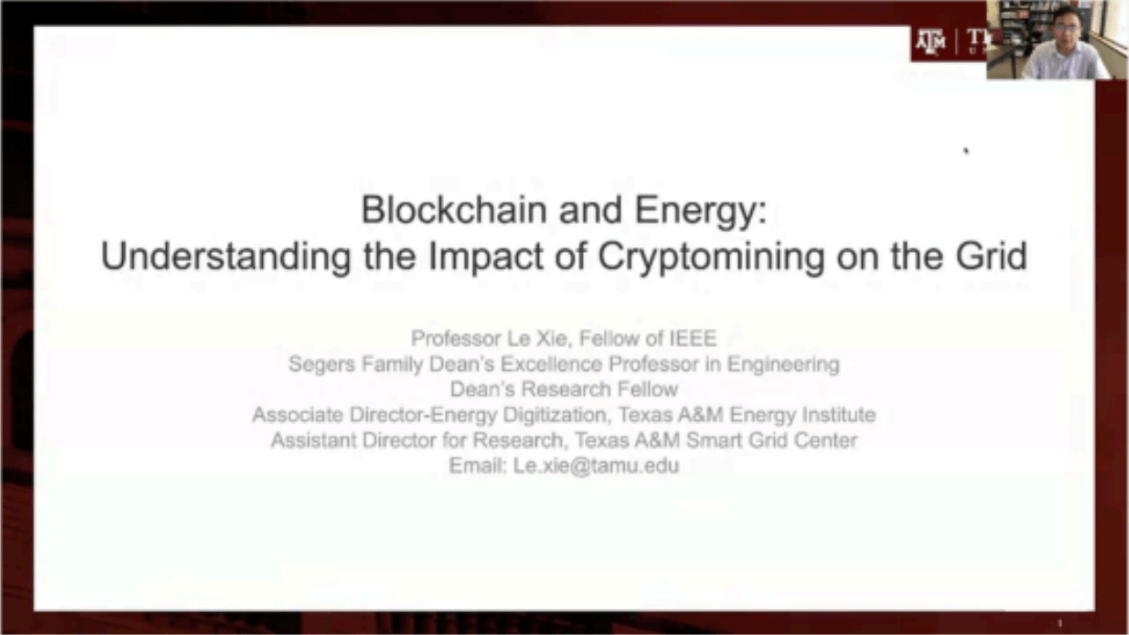
Mr. Chen Ming, a graduate of the Mechanical Engineering Department at Tsinghua University and MIT, is now based in Boston. Currently serving as the CEO of Innologic, a data center and operations software company, and the Founder/President of the blockchain company Innoblock, Chen Ming boasts over 20 years of IT expertise and 15 years of experience in founding AI enterprises.
Chen Ming shared insights into the operational considerations and details that BTC mining farms need to pay attention to in their actual operations. He emphasized that successfully integrating the operation of mining machines and mining farms requires a diverse skill set. Mining machines and the hardware, workloads, energy consumption, and networks in data centers (IDC) can vary significantly. Mining farms operate in environments that are generally more remote and challenging than IDCs, requiring a competent operations team to optimize hardware and address heat dissipation issues. The power consumption of a single mining machine can exceed 3000W, and the electricity consumption of a mining farm can rival that of an entire neighborhood or even a town. Higher uptime for mining machines is preferable. In the current market conditions, with the coin price below $13,000, miners with ordinary machines may face bankruptcy. For those with state-of-the-art machines, the shutdown price can be further reduced to $8,000-$9,000.
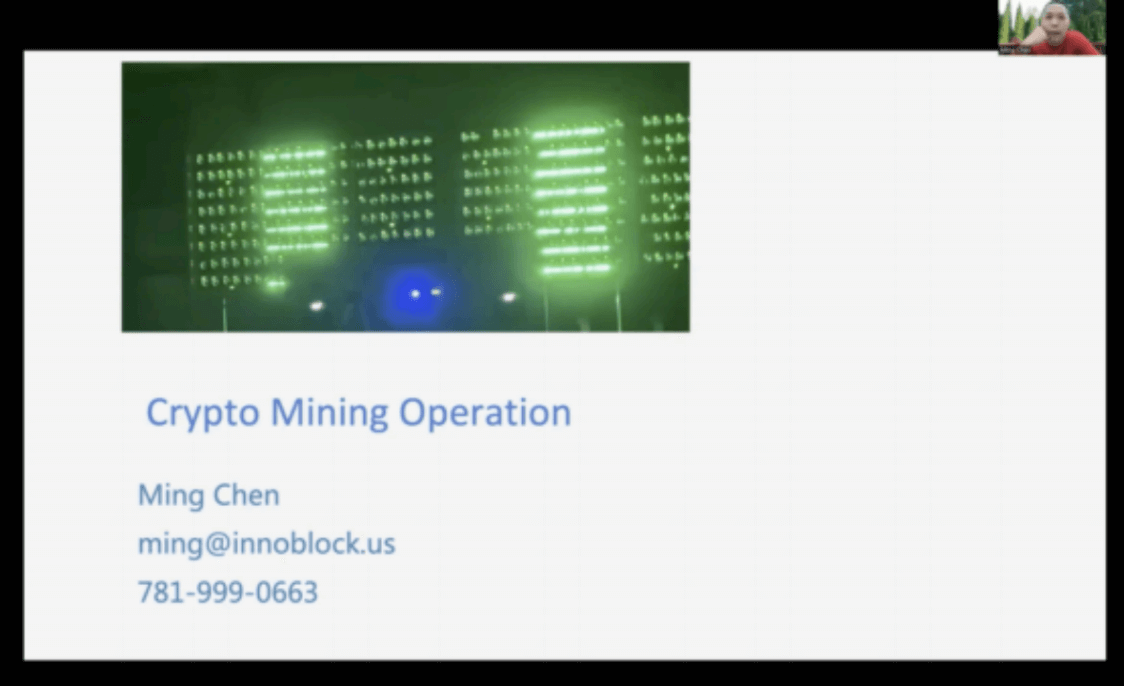
Mr. Wen Jin, a graduate of the Economics and Management School at Tsinghua University(Former President of the Student Union of the School of Economics and Management). He has many years of experience in the ASIC mining machine industry and has served as the Vice President of Marketing and Sales for a well-known mining machine manufacturer. Currently, he operates and manages mining machine maintenance and operation networks in the United States. Settle in Silicon Valley for a long time.
Wen Jin provided a detailed introduction to the model and technical parameters of mining machines, as well as the value of mining. The mainstream mining machine on the current market is Ant Mining Machine, which occupies more than 70% of the market. The mining machine for digging BTC is an ASIC mining machine, which consists of three operation boards with embedded chips, and each chip is connected in series. The elements of mining machines include computing power, energy efficiency, etc., and heat dissipation is one of the challenges of mining machines. Wen Jin believes that investing 5% of assets in digital assets is a good coping strategy; In terms of investment choices for mining machines and coins, mining machines are manually operated cars with greater operating space. Regardless of the price of coins, there will always be miners who ultimately make a profit, while coins are automatic cars with less freedom of operation. Wen Jin believes that Bitcoin has great potential and is a very meaningful field in both application and investment.
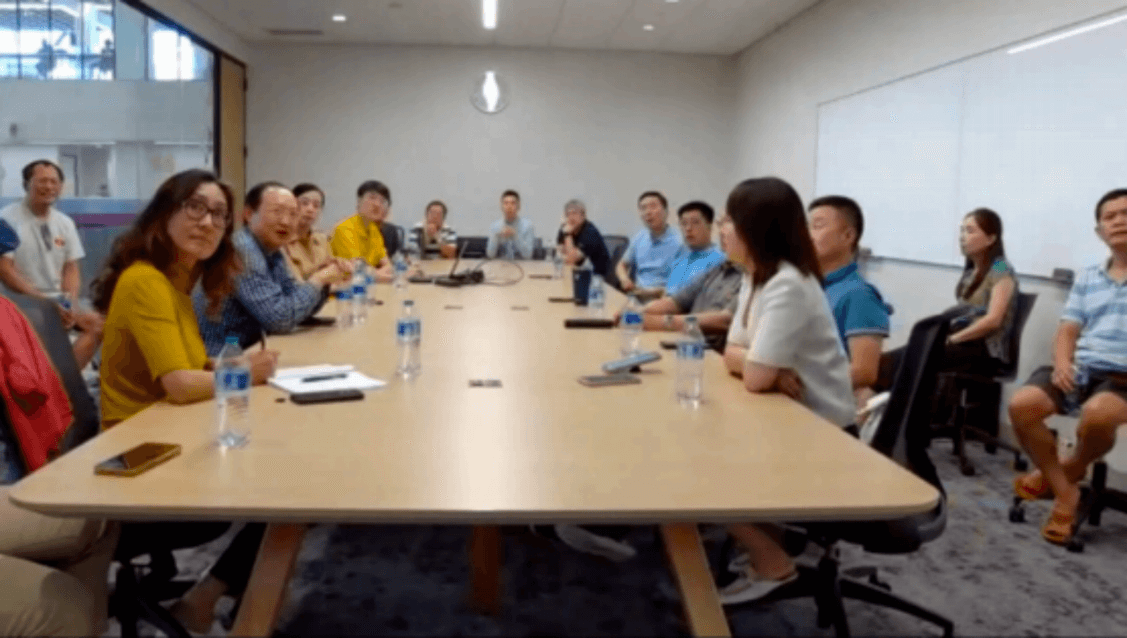
Mr. Zhang Liang, a graduate of the Civil Engineering Department at Tsinghua University, pursued his master s degree in Civil Engineering and MBA in the United States. Having worked at Capital One and United Rentals, he has rich entrepreneurial experience in engineering consulting. Currently settled in Dallas, he is engaged in work related to engineering management and real estate development investments.
Zhang Liang provided insights into the design and construction of Crypto mining farms. There are two main types of mining farms: warehouse-style and container-style. Warehouse-style farms offer better environmental conditions but come with higher costs. Chinese miners in the United States often choose container-style farms, with each container accommodating around 200 mining machines. Mining farms typically choose locations close to energy/electricity sources, where electricity can be obtained either on the grid or off the grid. "Off the grid" mainly refers to renewable energy, which is cost-effective, while "on the grid" involves higher costs and may be less environmentally friendly from a legislative perspective. When selecting a mining farm location, factors such as network accessibility, water availability, transportation convenience, security, and maintenance difficulty also need to be considered. Zhang Liang believes that Bitcoin mining is highly flexible in electricity usage and can enhance the sustainability of the entire power grid. Utilizing electricity during off-peak periods can increase the revenue of power plants, indirectly enabling power plants to better meet users demand during peak periods.
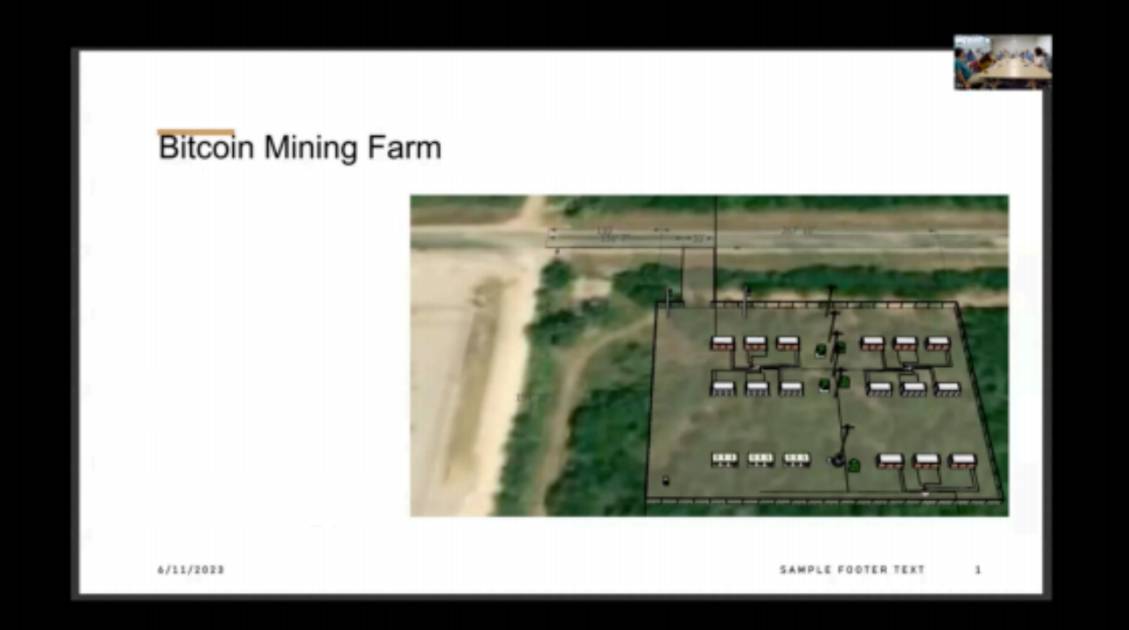
At the end, Zhang Lu, CEO of TDTC, supplemented the speeches and pointed out that the energy consumption of Bitcoin mining accounts for only 0.14% of global energy consumption (2022 statistical data), and its market value is less than one-third of Apple s, making it a very niche asset. However, its uniqueness and encryption features have attracted considerable attention. The electricity cost for crypto mining is relatively low, so mining operations are usually located in remote areas, utilizing edge energy sources that cannot be stored. If not used, these energy sources would go to waste, making Bitcoin mining a way to valorize the value of remote energy. Additionally, TDTC s Chairman Zhang Yan, also a Tsinghua alumnus, participated in the meeting and briefly introduced the business models, profit calculation methods and principles, as well as industry situations for listed companies in crypto mining business.
The panel attracted numerous Tsinghua and Peking University alumni in Dallas. The guests provided a clear and in-depth introduction to the concepts and practices of Crypto mining, helping alumni gain a comprehensive understanding of the digital currency industry and BTC mining. The panel successfully achieved TDTC s outreach among Tsinghua and Peking University alumni in Texas, laying a preliminary foundation for cooperation between the company and alumni in the crypto mining industry in Dallas. In the future, TDTC will continue to organize panels and events on cryptocurrency-related themes to further enhance the cohesion and influence in the BTC mining industry in Texas, USA.